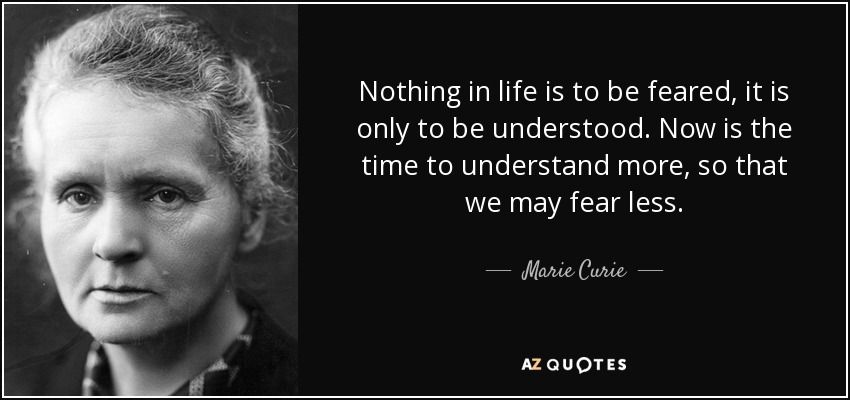Throughout history there have always been people willing to risk and sacrifice to push forward in their fields. Some become renowned scientists and some help shape the understanding of millions through the words they write.
A big part of the message I want to share with the world is that anyone can be excellent in their chosen field if they are willing to work and sacrifice. The main characters in my books strongly believe this and are all at different points of this process.
Which is why I want to share about scientific pioneer and two times Nobel Laureate, Marie Curie.

5 things you didn’t know about Marie Curie
1.
While most people know that Marie Curie was the first woman to win a Nobel Prize in 1903 for her discoveries of radioisotopes radium and polonium, did you know that she almost wasn’t mentioned? The award nomination originally only included her research partner and husband Pierre Curie and their contemporary Henri Becquerel.
2.
During World War 1, Marie Curie invented a mobile x-ray unit called a “Little Curie” installed it into “radiological cars” and trained 150 women to operate it. This mobile x-ray unit was critical to getting help to front line injuries and battlefield surgeons. Even more impressive, to further help the ware effort Curie learned to drive and operated her own “little Curie.” It is estimated that through her efforts the total number of soldiers who received x-rays during the war exceeded one million. This makes Marie Curie a War Hero.
3.
Einstein personally came to Curie’s defense. As is true with most ground breakers, Marie Curie experienced a whole host of scandal and controversy that criticized everything from her immigrant roots to her sex life. The situation got so bad that at one point she was counseled to not travel to Sweden to accept her second Nobel Prize. When Einstein learned of this he wrote her a wonderful letter where he encouraged her “to simply not read that hogwash, but rather leave it to the reptile for whom it has been fabricated.”
4.
Marie Curie’s daughter, Irene Joliot-Curie, won her own Noble Prize in 1935 for discovering a way to create artificial radioactive isotopes for use in medicine. Sadly, Marie died before the announcement was made in 1934.
5.
Marie Curie kept a sample of radium next to her bed to use as a night light.

Resources
- https://www.biography.com/news/marie-curie-biography-facts
- https://www.smithsonianmag.com/history/how-marie-curie-brought-x-ray-machines-to-battlefield-180965240/
- https://www.famousscientists.org/irene-joliot-curie/
***

Check it out! The Create Loud Podcast brought me on the show to discuss the writing process and the importance of embracing your own uniqueness.
***
You can also find updates and post notifications on Facebook, Twitter, and Instagram – chose the one you like the most!
